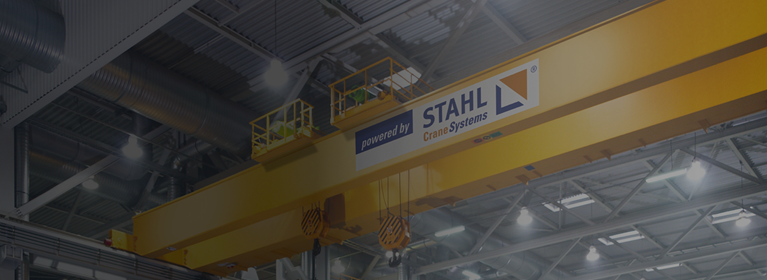During the hundreds of classes, Columbus McKinnon’s training team has conducted over the years, there are a variety of questions that arise regarding the use, maintenance and inspection of overhead cranes and hoists. So, I wanted to take this opportunity to outline seven of the most common concerns, myths, and misconceptions we’ve received from crane and hoist operators and technicians during our classes.
1. Question: Do monorails need to be labeled with their rated load?
Answer: According to ASME B30.11, rated load markings are not required on monorails but are recommended. Before marking the monorail, a qualified person must determine the rated load on the monorail beam. Once the monorail is marked, the rating should be legible from the ground floor. ASME’s recommendation also applies to marking the rated loads of hoists on the monorail. For more information on hoist marking guidelines, see ASME B30.16.
2. Question: Can rated loads for hoists and trolleys be different from the crane’s rated load?
Answer: The short answer to your question is “yes.” However, ASME B30.16 stipulates that when a system is comprised of components with different rated capacities, the rated load of the “system” shall be based on the lowest-rated individual component.
System is defined as the combination of Monorail, Hoist and Trolley in the case of a Monorail and Crane; Hoist and Trolley in the case of an Underhung Crane.
ASME B30.16-1.3.2 states that the supporting structure, including trolleys, monorail, or crane, shall be designed to withstand the loads and forces imposed by the hoist for the rated load.
Important note: As of 2015, ASME B30.11 Monorails & Underhung Cranes and ASME B30.17 were consolidated. This was done to better harmonize the standards, as many people have noticed in the past that B30.11 and B30.17 had similar wording and, in some instances, were exactly the same. This can cause confusion when referencing and interpreting the standards. Therefore, the ASME committees for both standards came to a consensus and created only one standard that refers to Cranes & Monorails (With Underhung Trolley or Bridge). This standard is ASME B30.17. You can see a cover page of the standard here
3. Question: Are yearly load tests required on a hoist and crane?
Answer: There is no specific time period during which load tests must be performed once the initial installation is inspected and load tested. Some states require operators to load test hoists and cranes every four years, but, in most cases, if the hoist is not altered, repaired or modified, it can remain in service indefinitely without a load test being required.
4. Question: Are monthly records of inspection required for hoists, wire rope, chain and hooks?
Answer: This depends on the type of crane. OSHA regulation 1910.179 applies to top-running overhead and gantry cranes with top-running trolley hoists. For these types of cranes, monthly inspections of the hoist’s chain, wire rope and hooks are required with a recorded certification. This certification record must include the signature of the person who performed the inspection and the identifier of the chain, wire and hook that was inspected. If a hoist and trolley are underhung, frequent inspections are required, but written documentation is not.
5. Question: Do you have to be certified to inspect and repair hoists and cranes?
Answer: According to ASME standards, you must be a “qualified person” to inspect and repair cranes and hoists. A “qualified person” is a person who, by possession of a recognized degree or certificate of professional standing, or who, by extensive knowledge, training and experience, has successfully demonstrated the ability to solve or resolve problems relating to the subject matter and work. These individuals do not have to be professional engineers.
6. Question: Do you need to disassemble hoists for yearly inspections?
Answer: Hoist disassembly is not always required for yearly inspections. What is found during the inspection typically determines how far you need to break down the hoist. Be sure to reference the manufacturer’s OEM manual when disassembling any hoist.
7. Question: Do chain slings require latches on hooks?
Answer: According to OSHA 1910.184 and ASME B30.9, slings do not require latches on the hooks, unlike hoist and crane hooks where latches are required unless they constitute a hazard.
To learn more, check out our Safety Webinar covering these same questions. I hope you find this information useful when using, repairing or inspecting overhead hoists and cranes.
North America - EN





